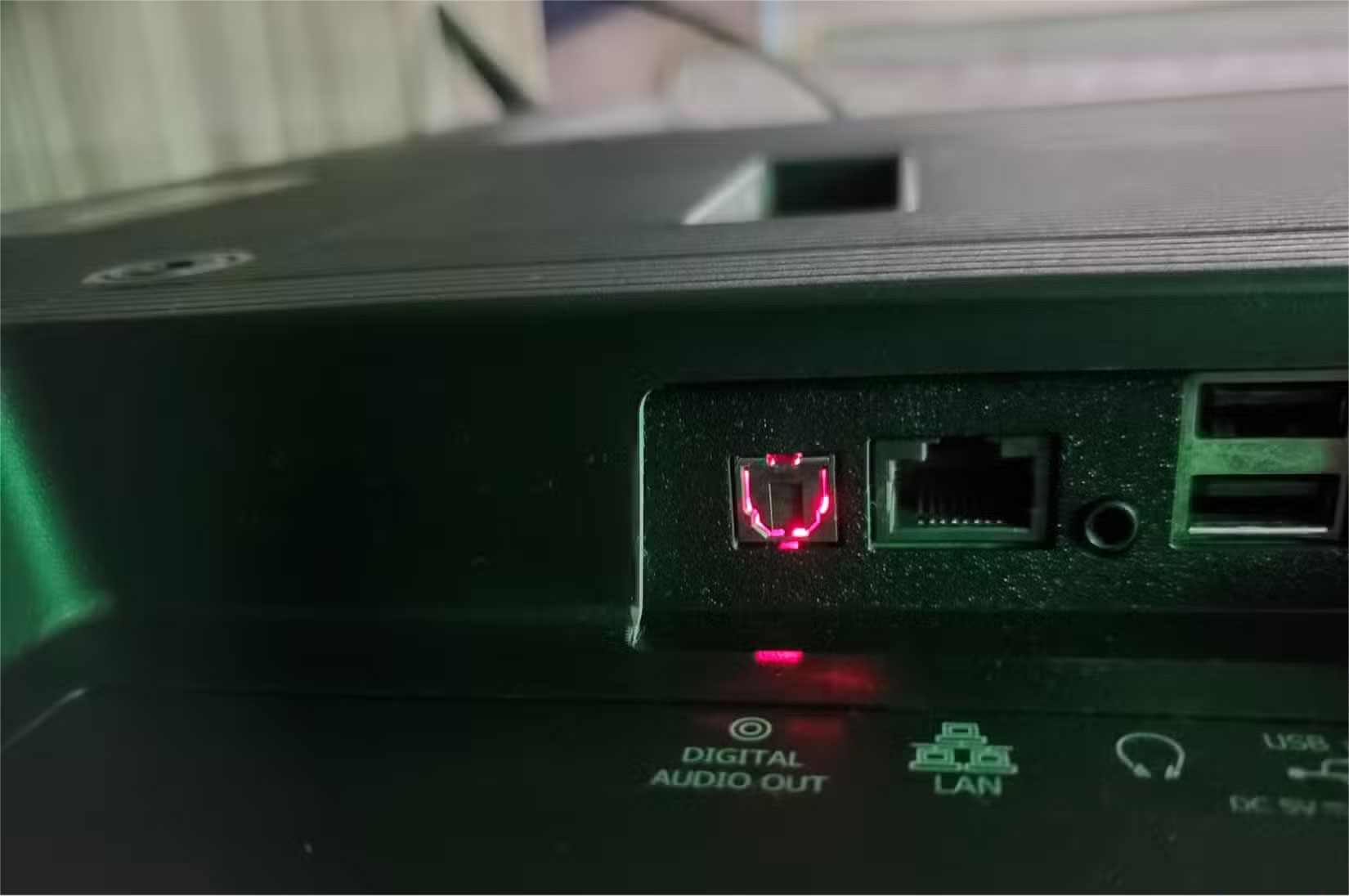Why do many people still keep optical audio cables in drawers?
If you've been cleaning out your tech lately, chances are you've found a forgotten optical audio cable (also known as TOSLINK) in a drawer. But before you give it away—or worse, throw it away—you might be surprised to find that there are plenty of good reasons to keep one around.
Optical audio is still compatible with many TVs and sound systems.
Even though HDMI has pretty much taken over the market, optical cables haven't disappeared from the hardware world. In fact, you'll find many mid-range and high-end TVs still equipped with optical outputs, as it's a simple and reliable way to send audio to a soundbar, AV receiver, or home theater system.

The key difference, however, is that unlike HDMI, optical cables only carry audio. You still need a separate cable for video. For example, you could connect a streaming box to your TV via HDMI to view the image, then run an optical cable from the TV to your sound system.
No electromagnetic interference
If you've ever heard a slight buzzing noise in your speakers when running a long analog cable, you know how annoying electromagnetic interference can be. The problem gets worse if those cables run alongside power cords, Wi-Fi routers, or other electronic devices that can cause interference.
Since optical audio uses light to transmit audio data instead of electrical signals, it is completely immune to electromagnetic interference (EMI) and radio frequency interference (RFI), which simply doesn't exist. This makes optical cables ideal for messy home entertainment setups or situations where cables have to be routed around other devices. You'll always get crystal-clear, noise-free sound.
And since optical cables can run several meters without signal degradation, they're a great choice for setups where the audio equipment isn't located directly next to the TV.
Supports high quality audio formats (to some extent)
Unfortunately, optical audio can't carry the latest uncompressed, lossless formats like Dolby TrueHD or DTS-HD Master Audio. If you want to enjoy full Dolby Atmos sound from a 4K Blu-ray, you'll need HDMI.
Optical audio can still handle what most people use on a daily basis, however. It supports uncompressed stereo (PCM) audio. It can transmit compressed 5.1 surround sound formats like Dolby Digital and DTS, which are the standard for streaming services, broadcast television, and many game consoles.
For Netflix , Prime Video, Disney+, and other streaming platforms worth paying for, Dolby Digital or Dolby Digital Plus over optical is perfectly fine. Unless you have a high-end Atmos 7.1.4 setup, you may not even notice the difference.
Works with game consoles and older devices
If you've been gaming for a while, you might remember the days when optical audio was a standard feature on consoles. The PlayStation 3 and PlayStation 4 had optical outputs. So did the Xbox 360 and early Xbox One models. And if you ever bought a Blu-ray player, especially in the early 2010s, it probably had one too.
This can be useful if you own one of these older devices or keep them around for classic gaming and media playback. You'll still need to connect the game console to your TV to watch video (usually via HDMI), but you can run a separate optical cable to your sound system for clear, unobstructed sound.
Perfect for extra rooms or old equipment
Maybe your main home entertainment system only has HDMI, but what about that old TV in the living room, office, or bedroom? Or that old sound system you installed for the kids?

Optical cables make it easy to connect these secondary setups without buying new equipment. You can pair an old soundbar (perhaps one with a flaky HDMI port) to a TV that still has a working optical output, or connect an old AV receiver to a display with a simple optical link.
It's also a neat way to get the most out of your old hardware. Just because a device doesn't support HDMI doesn't mean it's ready to retire; optical cables can keep it going for years to come.
You should read it
- How to use Optical Out (S / PDIF) port on a PC
- After completing the sea cable line SMW3, the Internet returned to normal
- The recovery of AAG cables must last until October 3
- APG fiber optic cable is having trouble, international traffic is reduced by 50%.
- AAG cable has been repaired earlier than 4 days, Vietnam Internet has gone 100% to international recovery.
- The Vietnam Internet will go international on AAG submarine cable to be restored on 9/11
 How to protect your laptop before going back to school
How to protect your laptop before going back to school 5 ways to make use of spare HDMI ports
5 ways to make use of spare HDMI ports 4 reasons to buy a pre-built PC
4 reasons to buy a pre-built PC 9 phone accessories that seem useless but are actually great
9 phone accessories that seem useless but are actually great 7 Windows Mouse Tips You May Not Know
7 Windows Mouse Tips You May Not Know Why You Shouldn't Waste Money Buying Apple Hardware as a Student
Why You Shouldn't Waste Money Buying Apple Hardware as a Student